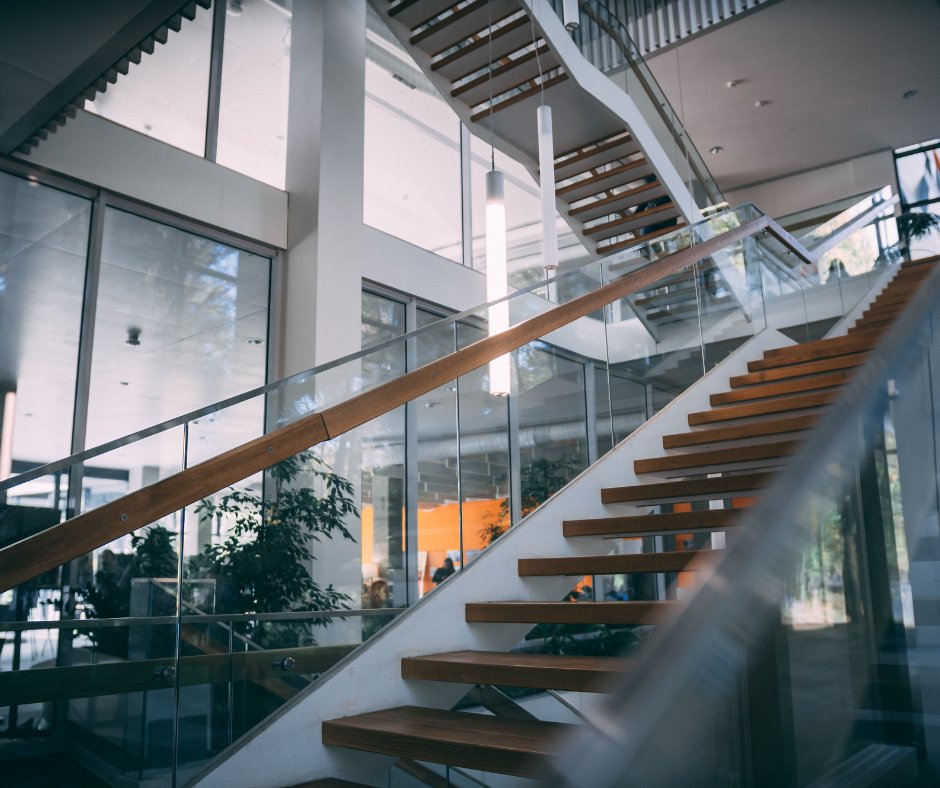Floating stairs may look like a work of art, but without the right treads, they can feel unfinished and unsafe.
If you want a staircase that’s as practical as it is beautiful, you’ll need to pick the best materials from the start.
Wood stair treads for floating stairs are individual wooden planks that attach securely to each step, providing a warm, natural finish that feels solid underfoot.
Unlike carpet stair treads, which add softness and traction, wood treads create a sleek, modern look perfect for open-concept spaces.
In this guide, you’ll learn how to choose, install, and maintain wood stair treads that suit your design and budget.
Keep reading to discover smart tips that may help you build a staircase you’ll be proud of every day.
Why Choose Wood Stair Treads for Floating Stairs?
Floating stairs need careful planning to look seamless. Each tread should feel solid underfoot, stay secure, and match the rest of your design.
Here are a few reasons wood treads are a popular pick:
-
Timeless Look: Wood has a warmth that metal or concrete can’t match.
-
Durability: Quality hardwoods last for years with minimal wear.
-
Safety: A properly installed tread reduces slips and trips.
-
Easy Care: Just a quick sweep or damp cloth keeps them fresh.
Wood treads also add a layer of comfort that feels inviting to bare feet. And if you ever decide to refresh your style, you can refinish or replace them without much hassle.
Types of Wood Stair Treads
Not all treads are created equal. Here are some of the most common options:
Solid Hardwood Treads
These are milled from one solid piece of wood. They feel substantial and offer a natural grain pattern unique to every step. Solid treads are often preferred for their strength and ability to handle heavy use. They may also be sanded and refinished multiple times to keep them looking new.
Engineered Wood Treads
Made from multiple layers with a hardwood top, these treads resist warping and may be more budget-friendly. Engineered treads can be a smart choice in areas with high humidity or temperature swings. They look nearly identical to solid wood while providing extra stability. This makes them a dependable option for busy households.
Custom-Made Treads
Custom orders let you choose the thickness, stain, and finish to match your floating stairs perfectly. You can also pick specialty edge profiles to fit your style. Custom treads allow you to create a one-of-a-kind look that fits your home like a glove. They also make it easier to solve tricky stair layouts or unique measurements.
Matching Stair Noses for Floating Floors
If you also have floating floors near your staircase, you might be considering stair nose for floating floors. A stair nose bridges the gap between the floor and each tread, giving your steps a finished, safe edge.
When planning your project, consider:
-
Using the same wood species for a cohesive look.
-
Matching stain or finish for color consistency.
-
Selecting profiles that reduce tripping hazards.
A well-matched stair nose helps keep your floors from shifting over time. It also creates a clean transition that feels comfortable underfoot.
Floating Stairs for Garden Spaces
While most floating stairs are inside, they’re becoming popular in outdoor spaces too. Floating stairs for garden spaces blend form and function.
Imagine stepping onto wide wooden treads surrounded by greenery. Outdoor floating stairs create a welcoming path that feels natural and modern. They can also connect decks or patios with different levels in your yard. With the right materials, you may enjoy this style year-round without worrying about wear.
How to Install Wood Stair Treads on Floating Stairs
Here’s a simple overview of how installation typically works:
-
Measure Each Step Carefully: Floating stairs often vary slightly in width. Accurate measurements are key to a snug, safe fit. Take your time to double-check each dimension before ordering.
-
Order Custom Treads or Cut to Fit: Make sure the depth and length are exact. If you’re unsure, most suppliers offer templates or guides to help. Custom orders are worth it to avoid gaps and uneven edges.
-
Secure Treads with Approved Adhesive or Screws: Always follow manufacturer instructions. This step helps prevent shifting or squeaks as you walk. Using the right adhesive also protects your warranty.
-
Install Stair Noses if Needed: This step finishes the edge where the floor meets the tread. A proper stair nose adds a polished look and extra safety. Be sure it’s level and flush with the tread surface.
-
Apply Finish or Sealant: Protect your wood against moisture and scuffs. A quality finish helps preserve the natural beauty of the grain. Reapply as needed to keep your stairs looking fresh.
If DIY feels overwhelming, consider hiring a local pro for help.
Benefits of Choosing Oak Valley Designs
When you work with Oak Valley, you get:
-
American-Made Quality: Our treads are designed and crafted in North Georgia.
-
Customization: Pick your wood, stain, and size.
-
Family-Focused Service: We’re here to help every step of the way.
-
Simple Installation: No complicated tools or special training required.
We know that every home has its own personality and needs. Our team will walk you through options to find the perfect fit.
Common Questions About Wood Treads for Floating Stairs
Will wood treads work with metal stringers?
Yes. Many floating stair designs use metal supports, and wood treads attach cleanly to them. Just be sure the hardware and adhesive are rated for your materials. This ensures the treads stay secure under daily use.
Are wood treads slippery?
Most have a matte or textured finish to reduce slips. You can also apply anti-slip treatments. Adding stair runners or grip tape is another simple solution.
How do I keep them looking great?
Sweep regularly and wipe with a damp cloth. Avoid harsh cleaners. Using a wood-safe polish every few months can bring back the shine.
Steps To Success
Wood stair treads for floating stairs bring beauty and comfort to your space. With the right design and a touch of Southern craftsmanship, you may create a look that’s both timeless and functional. Choosing the right treads is a smart way to improve safety and style in one project. You’ll feel proud every time you step onto your new stairs.
Ready to Upgrade Your Floating Stairs?
Bring warmth, safety, and style to your floating staircase with custom wood treads crafted just for you. Our team is here to help you find the right fit and walk you through every step—no stress, no guesswork.
-
Website: https://oakvalleydesigns.com/
-
Phone: (706) 331-0315
-
Email: info@oakvalleydesigns.com
-
Address: 30 River Ct SW Bldg E Cartersville, Ga 30120



